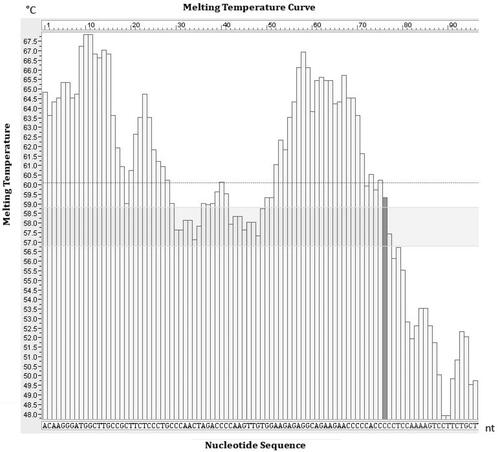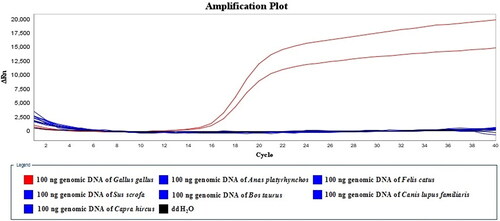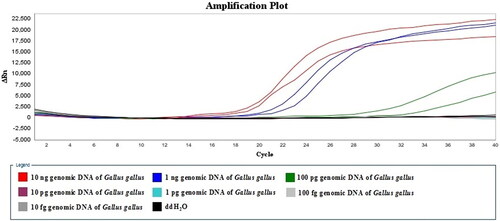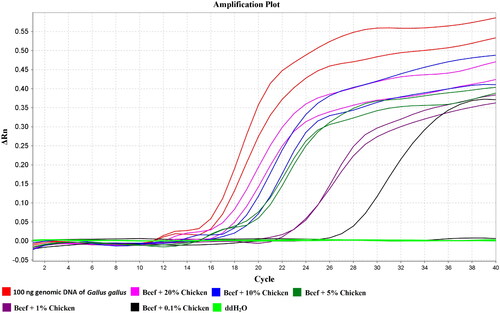Figures & data
Table 1. LMTIA primers targeting the prolactin receptor gene of Gallus gallus.
Figure 3. Temperature optimization of the LMTIA reaction 52 °C (A); 54 °C (B); 56 °C (C); 58 °C (D). The data show two parallel positive controls (100 ng genomic DNA of Gallus gallus) and two parallel negative controls (ddH2O) at each temperature.
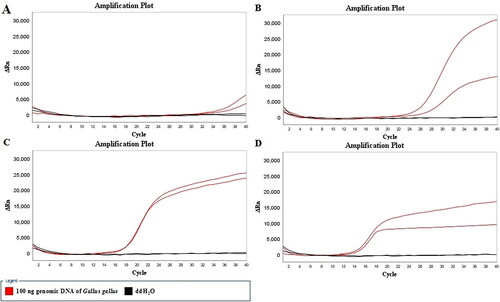
Data availability statement
The data that support this study are available from the corresponding author upon reasonable request.

